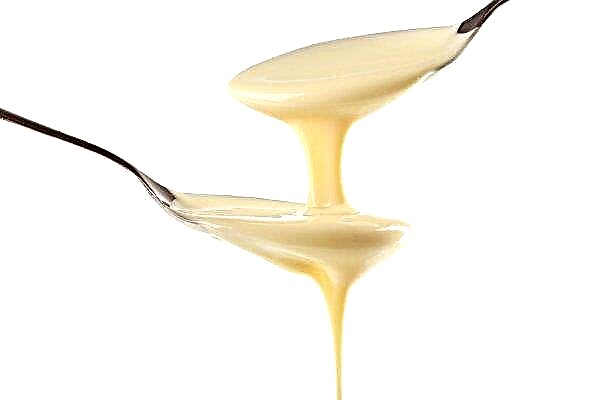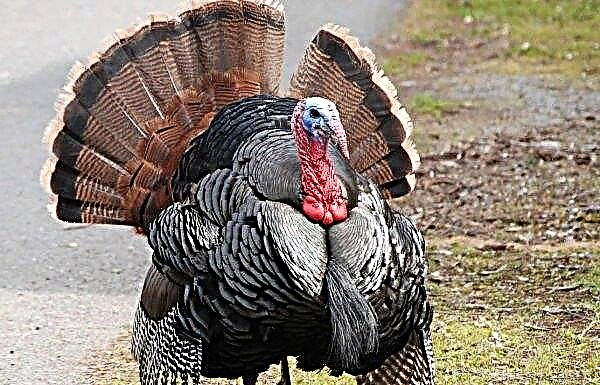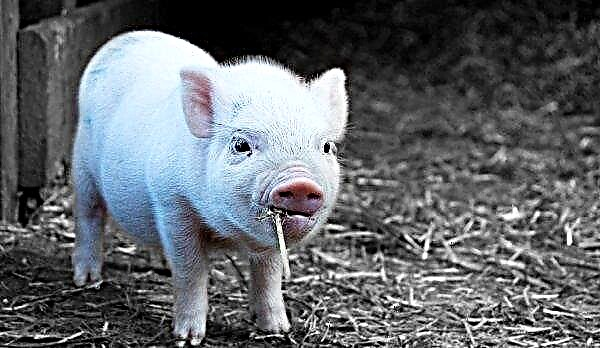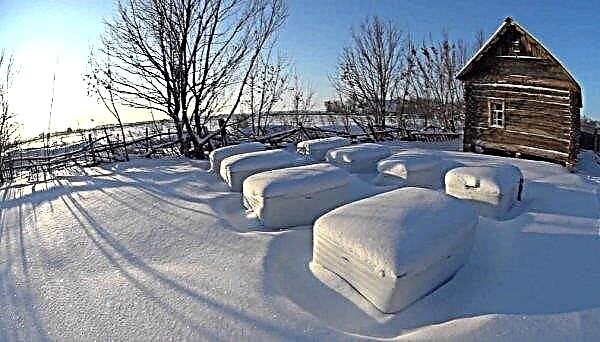The productivity of chickens largely depends on the conditions of their maintenance. A significant role in this is the arrangement of the chicken coop from the inside. How to do it right will be discussed below.
Interior arrangement of the chicken coop
The internal arrangement of the chicken coop begins with the preparation of a plan-drawing, in which the placement is displayed:
- perches;
- nests;
- feeders;
- drinkers;
- containers for the reception of ash baths.
Perches
The constant presence of the bird on the floor leads to the spread of infection, so they build perches for sleep. For poles, the warmest, shaded spot in the chicken coop is selected. This allows you to copy the conditions of an overnight stay in the wild, when the birds sleep on tree branches. The optimal length of the pole is equal to the width of the room. The thickness of the wooden beam is 4 × 4 cm.
The density of placement of hens is 20-30 cm per bird. Based on this, it is necessary to calculate how many poles will be installed in the room. The distance between them should be at least 25 cm. To save space, you can arrange the poles in steps, but not one above the other, so that the hens sitting above do not get dirty with lower droppings. When installing the poles, keep in mind that the optimal height to which the chicken can effortlessly rise is 80 cm. The highest pole should be located at this height. The lowest one can be placed at a distance of 20 cm from the floor. Having determined the height and number of perches, fixing elements are fixed on the walls that will hold the bars. Iron corners will do.
When installing the poles, keep in mind that the optimal height to which the chicken can effortlessly rise is 80 cm. The highest pole should be located at this height. The lowest one can be placed at a distance of 20 cm from the floor. Having determined the height and number of perches, fixing elements are fixed on the walls that will hold the bars. Iron corners will do.
Before fixing the pole itself, it must be processed with a plane and sanded with sandpaper. Paints and varnishes for smoothness will not work, because their composition is unsafe for chickens. After processing, the structure is strengthened at the corners with a screwdriver or drill. It is advisable to attach stairs to roosts located at a height of more than 30 cm, along which chickens can climb up.
Important! For the construction of poles, only a tree is suitable. The use of metal strips will lead to hypothermia of the bird's limbs in the winter.
Nests
The number of nests in the chicken coop will depend on the productive direction of the chickens:
- for meat breeds, one nest for 5 females is enough;
- meat and egg and egg breeds will need one nest for 2-3 chickens.
Recommended Reading

Wooden containers for storing vegetables or baskets are perfect as nests. The main requirement for the size of the nests is 40 × 40 × 35 cm. For the females to get used to the nests faster, lay a thick layer of soft hay in them (about 20 cm).
Nests should be placed in the most remote corner of the chicken house, protected from draft. It is important for laying hens to feel safe during laying, so they try to lay their eggs where no one will notice them. This factor must be taken into account when installing the sockets. The best placement option is where the laying hens have already laid eggs on the floor. This approach will reduce the period of training for nests.
Feeders
The volume of the feeding bowl will depend entirely on the number of chickens. Each head should have 10-15 cm, for chickens the area is halved. If the feeder is of a circular type, then 2–2.5 cm is enough for each bird. It is important that all birds have simultaneous access to food, otherwise weak individuals will remain hungry. When choosing a feeder or about to make it yourself, pay attention to the material. It should be safe for birds and easy to clean. It will take several containers designed for different types of feed. For wet mixers, you can build a hopper feeder from a plastic bucket. To make it, you will also need a plate for animals with dividers, a sharp knife and wire. The plate should exceed the diameter of the bucket by 5 cm.
It should be safe for birds and easy to clean. It will take several containers designed for different types of feed. For wet mixers, you can build a hopper feeder from a plastic bucket. To make it, you will also need a plate for animals with dividers, a sharp knife and wire. The plate should exceed the diameter of the bucket by 5 cm.
Recommended Reading

Having departed 0.5 cm from the bottom, holes are made in the walls of the bucket through which food will be served in a plate. It is not necessary to do too large so that the chickens cannot stick their heads in them.
The optimum diameter is 5 cm. Then the bucket is attached to the plate with a wire, wrapping it around both containers and connecting the ends on the handle of the bucket. It is better to install the finished feeding trough on a small elevation, immediately remove it after a meal and wash it.
For dry feed, a variant of a hopper feeder made of wood is not bad. You can design a box with an arbitrary length (for example, 120 cm): the size of the sides will be 120 × 9 cm, and the two small blanks - 20 × 12 cm. All these parts should be connected together using stainless steel corners. Along the entire length of the box, wooden poles should be installed at a distance of 10 cm from each other so that the bird could not get into the feeder.
Did you know? In order to announce to all the inhabitants of the chicken coop that it is necessary to get up, the rooster crowes once with long intervals at high frequencies. If he found food away from home and wants to call females, then his crowing will be low-frequency and often repeated.
Drinking bowls
The best option for chickens is nipple drinkers.
To do this, you will need:
- nipples
- transparent flexible hoses;
- droplet eliminators;
- square PVC pipe;
- 20 liter bottle
 The bottle will play the role of dispenser. Holes are made in the pipe into which the hoses are inserted. Nipples are attached to the hoses, which, in turn, are attached to the walls. Drop eliminators must be placed under the nipples. You can do without them, but then all the liquid will be on the floor, as a result of which humidity will increase, which will lead to the spread of infection.
The bottle will play the role of dispenser. Holes are made in the pipe into which the hoses are inserted. Nipples are attached to the hoses, which, in turn, are attached to the walls. Drop eliminators must be placed under the nipples. You can do without them, but then all the liquid will be on the floor, as a result of which humidity will increase, which will lead to the spread of infection.Tanks for the reception of ash baths
As containers for ash baths, you can use wooden boxes with a height of 20 cm. They contain a mixture of shell rock, wood ash and sand. The number of tanks depends on the number of chickens. For 5 goals, one box is enough. You can arrange them around the entire perimeter of the chicken coop, excluding the nesting zone. Ash baths are necessary to maintain the immunity of chickens. Using sand and ash, the bird cleans feathers, which reduces the risk of spreading feather bugs and fleas. Chickens eat part of the shell, which allows you to effectively clean the gastric tract and improve digestion.
Ash baths are necessary to maintain the immunity of chickens. Using sand and ash, the bird cleans feathers, which reduces the risk of spreading feather bugs and fleas. Chickens eat part of the shell, which allows you to effectively clean the gastric tract and improve digestion.
Microclimate in a barn for laying hens
Most breeds of hens do not tolerate winter cold, especially since this period often coincides with seasonal molting, when the bird's body is weakened. To regulate humidity, temperature and ensure the influx of fresh air in the chicken coop, ventilation should be equipped. In winter, chickens need to artificially increase daylight hours - this is necessary to increase their productivity.
Important! You can save heat in the chicken coop by forming high snowdrifts in the winter at the outer walls. In the spring it will need to be removed before the thaw, in order to avoid flooding the barn.
Ventilation
The type of ventilation must be selected at the construction stage: depending on the dimensions of the building and the number of seats.
In total, 3 types of ventilation systems are distinguished:
- elementary;
- supply and exhaust;
- mechanized.
Elementary ventilation system involves ventilation by opening windows and doors. The main task is to arrange the window openings so that the bird does not suffer from a draft. It is best to make a few dull windows (which do not open) and one small dormer with an adjustable sash, which will allow you to adjust the air supply. The essence of the method is that oxygen enters the chicken coop through the door, and carbon dioxide, along with ammonia vapors, is discharged through the window. It is permissible to use this technique only for a small livestock (up to 15 animals) kept in a small-sized building. Supply and exhaust system - The best option for a medium-sized capital building, which contains more than 20 chickens. It involves the installation of supply and exhaust pipes in different frequent chicken coops. For manufacturing, you need to take 2 plastic pipes with a circular cross section of 20 cm, 2 m long.
Supply and exhaust system - The best option for a medium-sized capital building, which contains more than 20 chickens. It involves the installation of supply and exhaust pipes in different frequent chicken coops. For manufacturing, you need to take 2 plastic pipes with a circular cross section of 20 cm, 2 m long.
Step-by-step instructions for the supply and exhaust system equipment:
- Fasten the supply pipe so that it is 35 cm above the roof and in the house at a height of 25 cm from the floor.
- Attach the exhaust pipe as close to the nesting zone as possible so that its lower end is 30 cm from the ceiling and the upper one is 1.5 m above the roof level.
- To prevent water from entering the mechanisms, the ends located above the roof level should be equipped with special metal umbrellas.
- To reduce the risk of hypothermia, cover the lower end of the supply pipe with a net.
Video: installation of forced ventilation in the chicken coop
The mechanized system is a network-powered fan. The easiest option is to install it in a window opening. To do this, replace the glass with a plywood sheet with a prepared hole for the fan. Such ventilation is appropriate when keeping more than 40 chickens.
Additional lighting
Daylight hours for chickens in winter should last 12-14 hours. To ensure this mode, use infrared lamps. This excellent device will help not only extend the daylight hours, but also play the role of a heater. Such lamps do not dry the air, and their soft light calms the chickens.
Important! Do not extend the daylight hours of chickens for more than 14 hours - this will lead to an early decrease in productivity. In winter, the bird needs to recover after the active phase of egg production.
Temperature
The optimum indoor temperature for chickens in winter is +12 ... + 17 ° C. In different parts of the chicken coops, you need to place thermometers to clearly monitor temperature indicators and quickly correct the situation with a significant decrease. If necessary, warm the room is better to give preference to infrared heaters. They warm the surrounding objects, not the air, so the heat will last longer. It is not worth overheating the room. + 17 ° С should be the maximum mark, otherwise the chickens will start to hurt due to a strong temperature difference when going outside.
What else to take care of
In addition to all of the above, you should take care of high-quality floor litter and disinfection of rooms. And even if heating equipment is installed in the shed, for the winter it is necessary to additionally insulate the walls, floor, ceiling and window openings.
Litter
Find out more

The optimal composition for bedding for the winter:
- peat - 5 cm;
- sawdust - 5 cm;
- straw dust - 5 cm;
- corncobs - 3 cm.
A total of 18–20 cm is obtained. It is better to lay out the components in layers. Straw dust and corn cobs can be replaced with hay. In the warm season, the litter can be laid in a smaller layer (10 cm), combining peat and sawdust. Full replacement of the litter is done every 3-5 months. For the winter, the litter must be completely changed by the end of October. Throughout the cold season, as the water gets wet (about once every 7-12 days), the top layer is replaced (7-10 cm).
Did you know? The chicken is able to recognize the owner from a distance exceeding 10 m.
Disinfection
The most important measure in maintaining a healthy microclimate inside the chicken coop is disinfection, including:
- cleaning of the premises every 7-10 days with the change of the upper layer of the litter;
- complete litter change every 3-4 months;
- washing drinking bowls and feeders every 1-3 days;
- sanitary treatment of walls with copper sulfate once every 3 months.
 All these procedures are necessary to eliminate pathogens that spread indoors under the influence of ammonia vapors released from the waste products of the bird. Eating stale mushrooms can lead to the spread of Escherichia coli, so feeders designed for wet food should be cleaned immediately after eating. Washing dishes for food and drink is carried out using non-aggressive detergents. You can use baby soap or baking soda.
All these procedures are necessary to eliminate pathogens that spread indoors under the influence of ammonia vapors released from the waste products of the bird. Eating stale mushrooms can lead to the spread of Escherichia coli, so feeders designed for wet food should be cleaned immediately after eating. Washing dishes for food and drink is carried out using non-aggressive detergents. You can use baby soap or baking soda.Sanitary treatment of the walls is carried out with a 3% solution of copper sulfate. At the time of processing the chickens you need to take to the street and ensure high-quality ventilation of the room. You can start the bird back after the walls have completely dried. If there have been cases of infection, it is better to bake the walls with gas lamps. With a complete change of litter, the floors are also treated with a solution of copper sulfate. After complete drying, lay a new litter.
Winter insulation
Before entering the chicken coop, it is better to equip the vestibule, especially if the room is intended for year-round maintenance. In the doors of the vestibule and the chicken coop itself from below, you need to build a hole for the hens through which they can get out for a walk. This will reduce the cooling rate of the premises in the winter. Insulate the walls of the chicken coop from the outside using OSB boards. The material is fixed with nails, then treated with an antiseptic.
You can use a 3% solution of copper sulfate. The inner surface of the walls is best treated with a layer of clay with straw. This material helps to keep warm in the winter and lends itself perfectly to any type of disinfection treatment, including firing with gas burners. In addition, it is completely safe for chickens, which cannot be said about polystyrene sheets, when the walls are insulated in a chicken coop there is a risk that the chickens decide to eat them and die from intoxication. The ceiling is insulated with felt. If the floor is made of concrete, then you need to make a plank coating from above.
On top of it fit:
- peat layer (about 10 cm);
- a layer of wood sawdust (8 cm);
- hay layer (5 cm).
Did you know? The reason why chickens of the Araucan breed carry blue and green eggs is the infection of all individuals of this breed with a retrovirus. In the process of life, it is embedded in the DNA chain of the chicken, which leads to an increase in the content of the shell of the pigment biliverdin.
The internal arrangement of the chicken coop is an important component in maintaining an optimal microclimate and simulating natural living conditions. The right approach to this process allows you to increase livestock productivity.












